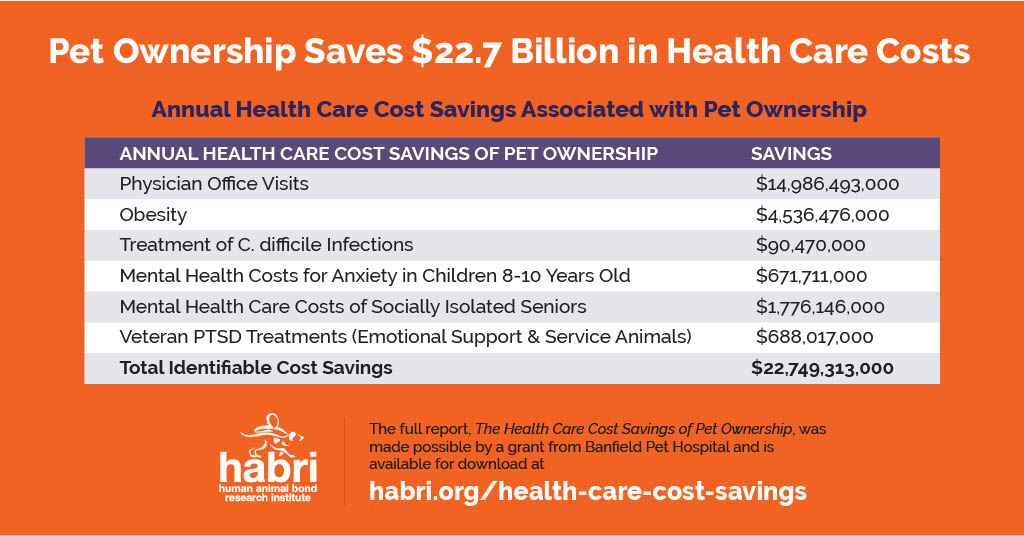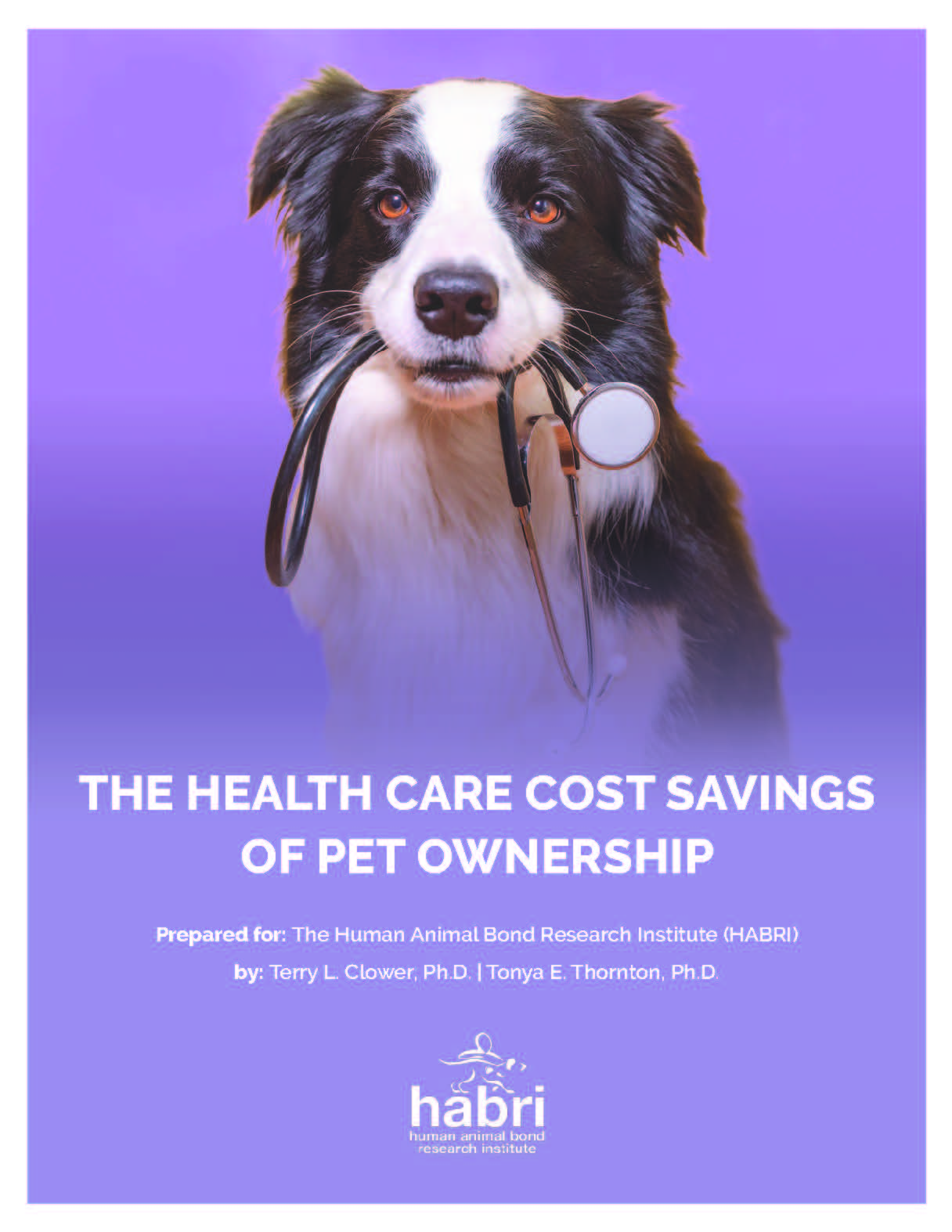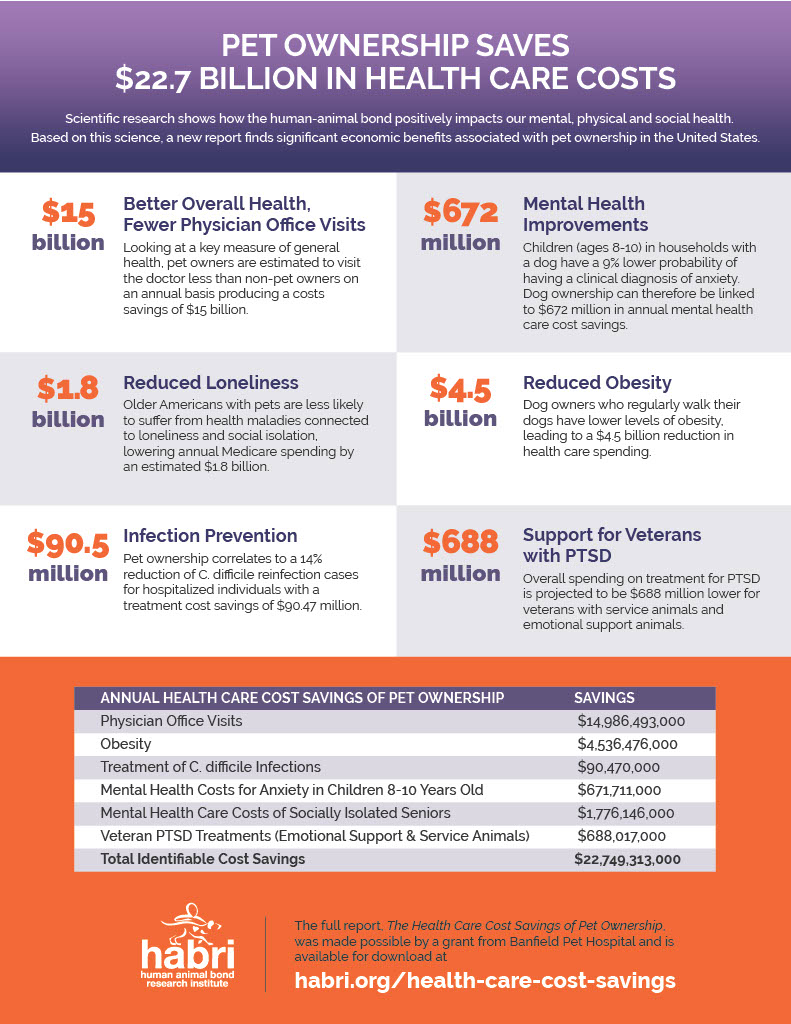Millions of people view pets as family and count on their unconditional love. While it’s hard to put a value on the human-animal bond and what it means for so many of us, the Human Animal Bond Research Institute (HABRI) commissioned a new economic impact report which gives us a partial answer – pet ownership saves the U.S. health care system $22.7 billion every year.
The Health Care Cost Savings Report was made possible by a grant from Banfield Pet Hospital.
Access the full Health Care Cost Savings of Pet Ownership Report here.
Key Findings
The report not only reflects better overall health for pet owners in the form of fewer doctor visits per year, but also tracks specific savings for reduced obesity, reduced infections, and better mental health for children, seniors, and our nation’s veterans. For each of these populations, there exists solid evidence supporting the benefits of pet ownership.
$15 billion
Looking at a key measure of general health, pet owners are estimated to visit the doctor less than non-pet owners on an annual basis producing a costs savings of $15 billion.
$4.5 billion
Dog owners who regularly walk their dogs have lower levels of obesity, leading to a $4.5 billion reduction in health care spending.
$90.5 million
Pet ownership correlates to a 14% reduction of C. difficile reinfection cases for hospitalized individuals with a treatment cost savings of $90.47 million.
$672 million
Children (ages 8-10) in households with a dog have a 9% lower probability of having a clinical diagnosis of anxiety. Dog ownership can therefore be linked to $672 million in annual mental health care cost savings.
$1.8 billion
Older Americans with pets are less likely to suffer from health maladies connected to loneliness and social isolation, lowering annual Medicare spending by an estimated $1.8 billion.
$688 million
Overall spending on treatment for PTSD is projected to be $688 million lower for veterans with service animals and emotional support animals.
$22.7 billion
In total, pet ownership saves the U.S. health care system $22.7 billion every year.
For more details on these key findings please see the Health Care Cost Savings of Pet Ownership infographic.
Report Methodology
The report was co-authored by Terry L. Clower, PhD and Tonya E. Thornton, PhD, MPPA, both of whom have extensive expertise in economic and public policy research. Their analysis not only reflects savings from better overall health for pet owners in the form of fewer doctor visits per year, but also tracks specific savings for key public health issues affecting millions of Americans, including reduced obesity, reduced infections, and better mental health for children, seniors, and our nation’s veterans.
Using the methodology employed in the 2015 analysis and adapted for more recent health care services consumption and cost information, pet ownership rates, and population increase, the researchers examined the scientifically-documented health benefits of pet ownership; identified the populations receiving these benefits; and quantified the avoided health care costs for those populations. To do this, the authors first conducted a review of relevant, peer-reviewed academic and professional literature regarding the health benefits of pet ownership. The most recent cost estimates for health services and treatments related to the health conditions identified in the literature review were identified based on an examination of publicly available health care cost data. Pet ownership data was also identified from publicly available sources. The estimated savings to the U.S. healthcare system associated with pet ownership were calculated using these inputs. An additional discussion of identified health benefits associated with pet ownership for which cost savings calculations could not be made was also included in the report.
Downloads
- Download the full Health Care Cost Savings of Pet Ownership Report here
- Download the Health Care Cost Savings of Pet Ownership Infographic here






